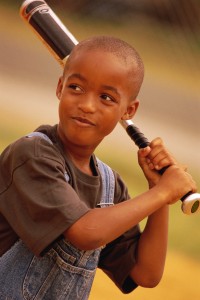How has vision training enhanced the performance of athletes and airmen alike? There are very specific skills required for peak performance in both of these fields. In both arenas, physical training is a must. However, there are skills that go beyond physical training to reach optimum performance.
5 Important Visual Skills for Peak Performance:
- Eye-hand coordination – coordinating eye movements with hand movements with integration of visual input
- Reaction time – the ability to respond quickly to a stimulus
- Depth perception – judging the distance and speed of objects quickly and accurately
- Peripheral Vision – seeing team mates and opponents “from the corner of your eye” while concentrating on a central object (ball, puck, etc.)
- Visualization – putting a visual image in your “mind’s eye” to help focus and follow-through. Studies have shown that your brain doesn’t differentiate between visualizing and actually performing the exercise; neurologically, visualization summons many of the same areas of the brain involved in the actual physical expression of the skill.
Star athletes have known for years that vision training gives them an edge in performance. From professional golfers, to NBA players, to Larry Fitzgerald, wide receiver for the Arizona Cardinals, vision training has been a key component to success in their sport. Exceptional visual skills are often what separate great athletes from good athletes.
A recent article (April 5, 2013) entitled “Air Force Study Confirms Efficacy of Vision Training” confirms the positive results of vision training with airmen who participated in sessions involving specific vision exercises. The results were impressive according to Major Janelle Robertson, a doctor and statistician in the 96th Medical Group, with participants improving their scores by 65% compared to their non-trained counterparts, whose scores dropped by 69%.
Sports Vision Director in the Air Force Academy Athletic Department, Dr. Al Wile, acknowledged those findings. “Remember, we are talking about training six outer ocular and two inner ocular muscles of the eyes; and just like any other muscle in the body, a training effect takes place when the muscles are tasked [with repetition]…”
“If two similarly-trained athletes meet in competition and one has a better trained visual system, the athlete with the enhanced visual system will perform better.”
 Come in for a Sport Vision Therapy exam to see if Minnesota Vision Therapy Center can help you! We have worked with many athletes and look forward to seeing more athletes excel with visual training.
Come in for a Sport Vision Therapy exam to see if Minnesota Vision Therapy Center can help you! We have worked with many athletes and look forward to seeing more athletes excel with visual training.
Source: Human Performance Laboratory, Department of Athletics, US Air Force Academy, May 2006
